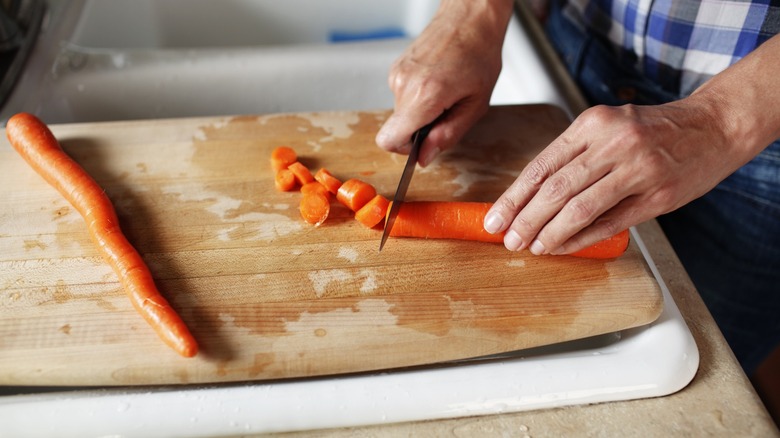The Kitchen Prep Tool You Need If You Have Limited Counter Space
We may receive a commission on purchases made from links.
An expensive kitchen remodel that costs a ton of money is great if you can afford it, but many of us are just trying to make do in our humble, old-school kitchens where space always seems to be an issue and major renos just aren't in the cards. Small kitchens need sensible solutions, just like when Martha Stewart increased counter space in a little galley kitchen by hanging shelves. But we have an even more thrifty solution that involves just one reasonable purchase: an over-the-sink cutting board that allows you to utilize space you didn't realize you had for food prep.
You might be living a modest life where you don't necessarily worry about your kitchen appliances matching, sure. But we know that, at the bare minimum, you have a kitchen sink taking up valuable counter space that you could be using to cut vegetables, trim cuts of meat, or otherwise prep your dinner. A folding, space-saving cutting board spans the width of your kitchen sink and gives you a portable space to work on.
The original intent of an over-the-sink cutting board is for cutting things, but you don't need to limit yourself. With a sturdy board, it will just as easily become a spot to stick pans waiting to be served, a staging area for plates and utensils, or a sideboard for dishes. Counter space is the absolute greatest asset in a tiny cooking space, and we love the idea of instantly accessing more with this simple addition!
How to choose the right cutting board
A great over-the-sink cutting board will have many uses and a ton of functions. For one thing, it can cover the sink when it's not in use, which can improve sanitation in your cooking space. Some of these cutting boards even come with built-in bowls for the produce you are processing or trays where you can sweep cooking scraps as you work. The number of features you desire and can afford is your choice, but even a no-frills board stands to improve your food prep tremendously.
Wood is one choice for a cutting board that is time-tested. It looks natural, feels great to the touch, and is gentler on your knives, but sanitation can become an issue. Wood will also need to be oiled regularly as part of upkeep. A plastic board, on the other hand, can be quickly and efficiently sanitized with a pass through your dishwasher, but, like wood, it will wear out over time. Appearance, price, and lifestyle are all factors that will help you make your decision.
If you plan on cutting both meat and veggies in your kitchen, you will, of course, need either two separate cutting boards or a single board that can be flipped over. The size of your sink will also dictate your choice to no small extent. Depending on whether you have a standard-sized sink, you might need a custom board, which will jack up your costs considerably.

